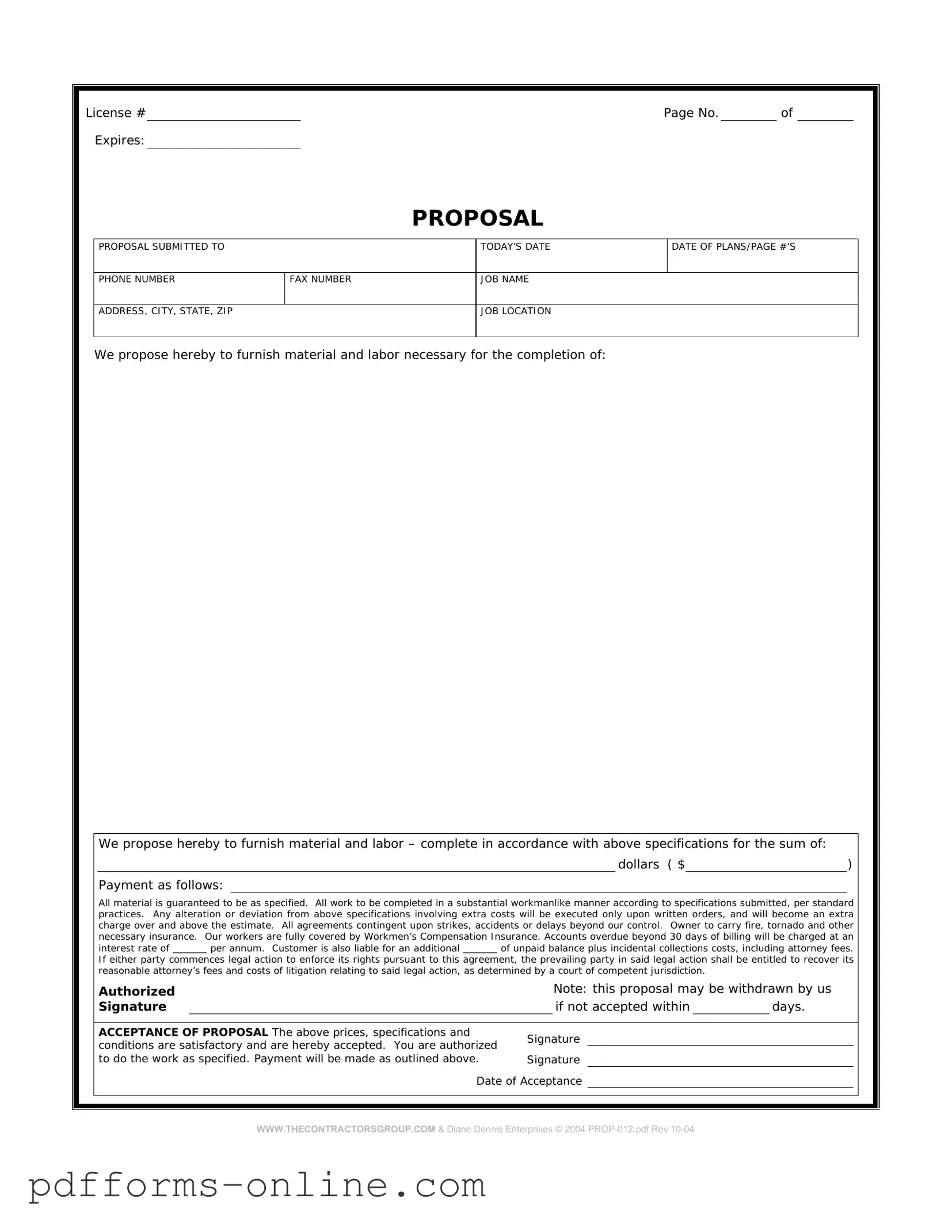The Construction Contract is a crucial document that outlines the terms and conditions between a contractor and a client. Like the Construction Proposal Form, it details the scope of work, timelines, and payment structures. However, while the proposal form is typically used to present an initial offer, the contract solidifies the agreement once both parties have accepted the terms. This document serves as a binding agreement, ensuring that both the contractor and client understand their responsibilities and rights throughout the project.
The Bid Proposal is another document closely related to the Construction Proposal Form. It is often submitted during a competitive bidding process, where multiple contractors present their offers to a client. The Bid Proposal includes detailed pricing, project timelines, and qualifications. Similar to the Construction Proposal Form, it aims to persuade the client to select a particular contractor. However, the Bid Proposal is usually more formal and may require adherence to specific guidelines set by the client or governing body.
A Scope of Work document is essential in construction projects and shares similarities with the Construction Proposal Form. It outlines the specific tasks, deliverables, and timelines expected from the contractor. While the proposal form may summarize these elements, the Scope of Work provides a more detailed breakdown, ensuring that all parties have a clear understanding of what is to be accomplished. This clarity helps prevent misunderstandings and disputes during the project.
Understanding the comprehensive General Power of Attorney document is essential for anyone looking to empower another individual to make significant decisions on their behalf. This form not only grants authority but also ensures that the appointed agent can manage financial and legal matters effectively, reflecting the principal's best interests.
The Estimate is a document that provides a detailed breakdown of the expected costs associated with a construction project. It is similar to the Construction Proposal Form in that it outlines pricing and project details. However, an Estimate is often less formal and may not include the same level of detail or commitment as a proposal. It serves as a preliminary financial guide for clients, helping them gauge the potential expenses before committing to a contractor.
A Letter of Intent is a document that expresses the intention of one party to enter into a formal agreement with another party. This document can be similar to the Construction Proposal Form in that it indicates a serious interest in moving forward with a project. However, it is typically less detailed and does not serve as a binding contract. Instead, it sets the stage for further negotiations and discussions, paving the way for a more formal agreement later on.
The Change Order is a document that outlines modifications to the original construction agreement. While the Construction Proposal Form presents the initial offer, a Change Order reflects adjustments that may arise during the project. This document is crucial for managing changes in scope, costs, or timelines, ensuring that all parties agree to the new terms. It helps maintain transparency and accountability throughout the construction process.
A Work Order is similar to the Construction Proposal Form in that it authorizes specific tasks to be completed by a contractor. However, a Work Order is typically more focused on individual tasks or phases of a project rather than the entire scope. It serves as a directive to the contractor, specifying what needs to be done, when, and at what cost. This document is essential for managing ongoing work and ensuring that all parties are aligned on expectations.
The Contract Agreement is a comprehensive document that formalizes the relationship between the contractor and the client. It encompasses elements found in the Construction Proposal Form, such as project scope, timelines, and payment terms. However, the Contract Agreement is more detailed and legally binding, providing a framework for resolving disputes and outlining the rights and obligations of each party. It serves as the foundation for the entire construction project.
Finally, the Project Schedule is a document that outlines the timeline for completing various tasks within a construction project. While the Construction Proposal Form may include a general timeline, the Project Schedule provides a more granular view of deadlines and milestones. This document is essential for keeping the project on track and ensuring that all parties are aware of critical dates and deliverables. It helps facilitate communication and coordination among team members.

